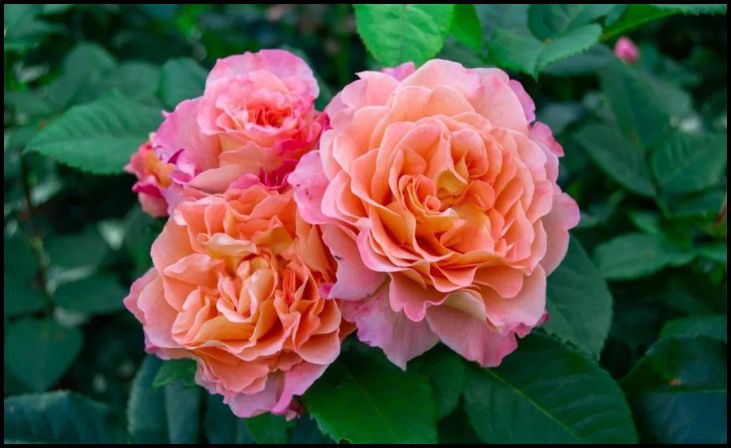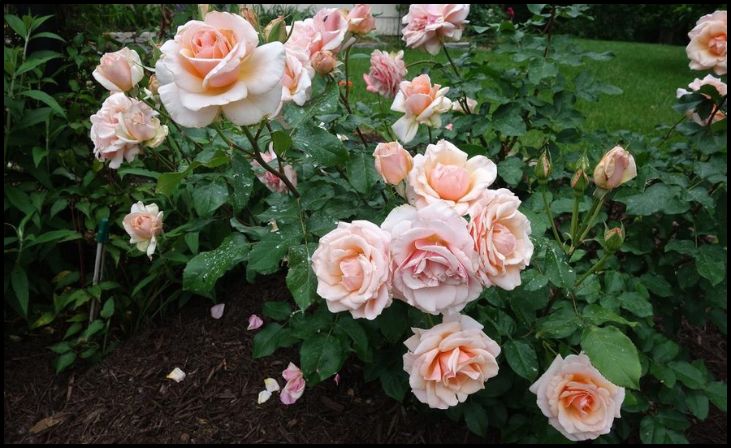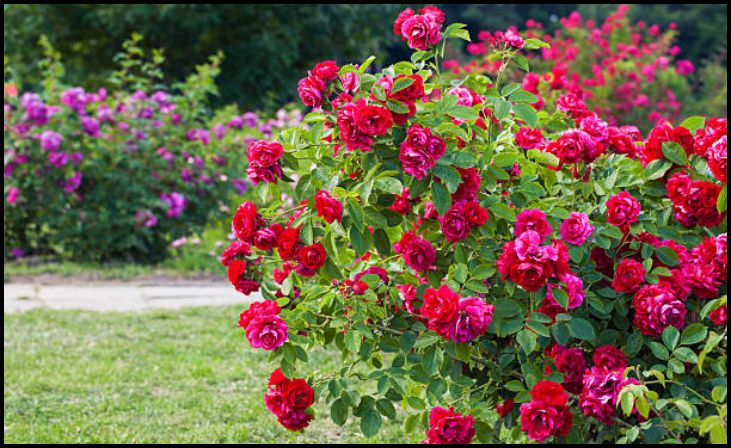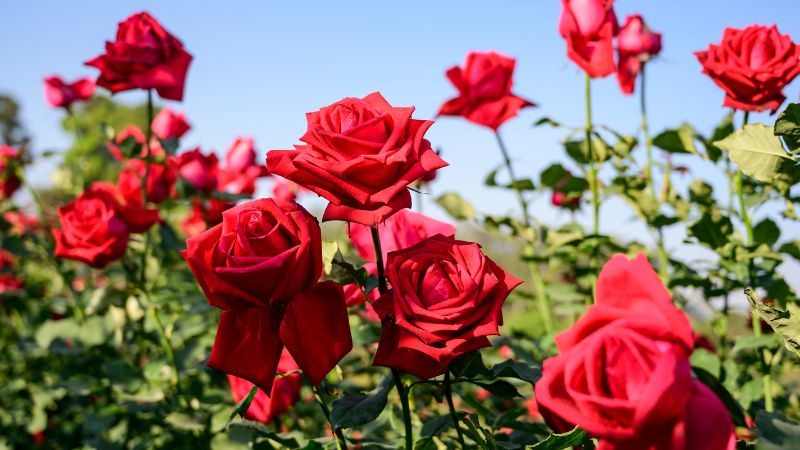Roses are one of the most beloved flowers in the world, renowned for their beauty and symbolism. While many are familiar with the classic red rose, there is a vast array of unique and stunning varieties that offer something different for every garden enthusiast. Here are eight unique types of roses you might be curious to explore.
1. Hybrid Tea Roses

Hybrid Tea Roses are the quintessential modern rose, famous for their large, single blooms that stand proudly on long, straight stems. These roses are perfect for cutting and are often seen in floral arrangements and bouquets. They were first developed in the late 19th century and have since become one of the most popular rose types. Their blooms can reach up to five inches in diameter and come in nearly every color imaginable. The plant itself typically grows upright and can reach heights of three to six feet. Despite their stunning appearance, Hybrid Tea Roses require meticulous care, including regular pruning and protection from pests and diseases.
2. Floribunda Roses
Floribunda Roses are a delightful choice for those who love abundant blooms. These roses are known for their ability to produce clusters of flowers, often filling the garden with a continuous splash of color. Developed by crossing Hybrid Tea Roses with Polyantha Roses, Floribundas offer the best of both worlds: the classic, high-centered bloom of the Hybrid Tea and the hardiness and prolific blooming of the Polyantha. These roses are often more compact and bushy, making them ideal for borders and hedges. They are available in a wide range of colors, including some beautiful bi-colors, and are generally easier to care for than Hybrid Teas.
3. Grandiflora Roses

Grandiflora Roses are a blend of Hybrid Tea and Floribunda Roses, created to offer the grandeur of Hybrid Tea blooms with the profuse blooming habit of Floribundas. These roses produce large, elegant flowers, often held singly or in small clusters on tall, sturdy stems. Grandiflora bushes can grow quite tall, often reaching heights of five to seven feet, making them an excellent choice for the back of garden beds or as a focal point in the landscape. They are available in a wide array of colors and often boast a delightful fragrance. While they do require some maintenance, their impressive blooms make the effort worthwhile.
4. Climbing Roses
Climbing Roses are a favorite among gardeners who want to add vertical interest to their landscapes. These roses produce long, arching canes that can be trained to grow on trellises, arbors, fences, and walls. Unlike true vines, they do not have tendrils to grip surfaces, so they need support and guidance as they grow. Climbing Roses come in various types, including Hybrid Tea, Floribunda, and even miniature varieties, providing a wide selection of bloom styles and colors. They often have a more prolific bloom cycle, with some varieties flowering continuously throughout the season. With proper care and pruning, Climbing Roses can create a stunning, romantic backdrop in any garden.
5. Shrub Roses

Shrub Roses are known for their hardiness and ability to thrive with minimal maintenance. These roses are typically larger and bushier than other rose types, making them ideal for creating informal hedges or mixed borders. Shrub Roses include a diverse group of plants, ranging from the old-fashioned and highly fragrant English Roses to the tough, disease-resistant Rugosa Roses. They offer a wide range of flower forms, colors, and fragrances, and many varieties are repeat bloomers. Their robust nature makes them a great choice for gardeners seeking beauty without the fuss of constant care.
6. Miniature Roses
Miniature Roses are perfect for small spaces, containers, or indoor gardens. Despite their small size, these roses pack a punch with their profuse blooms and vibrant colors. Miniature Roses are true roses, bred to stay small in stature but with all the characteristics of larger rose types. They can range from six inches to about two feet in height. These roses are incredibly versatile, often used in rock gardens, window boxes, and as borders. They are also a popular choice for bonsai. While they require similar care to larger roses, their compact size makes them easier to manage and enjoy up close.
7. Groundcover Roses
Groundcover Roses, also known as landscape roses, are low-growing, spreading plants that provide excellent coverage for large areas. These roses are ideal for preventing soil erosion, covering slopes, or creating a carpet of color in garden beds. Groundcover Roses are typically very hardy and disease-resistant, with a sprawling habit that can spread out to several feet. They produce clusters of small to medium-sized flowers in a variety of colors. These roses are known for their vigorous growth and repeat blooming, making them a low-maintenance option for adding long-lasting beauty to the landscape.
8. Moss Roses
Moss Roses are a unique and historic variety, known for the moss-like growths on their stems and sepals. These growths are actually glandular trichomes that release a pine-scented resin when touched, adding a sensory dimension to their appeal. Moss Roses originated in the 17th century and were popular in Victorian gardens. They produce beautiful, fragrant blooms in a range of colors, from soft pastels to deep, rich hues. While they tend to bloom only once per season, their distinctive appearance and delightful fragrance make them a cherished addition to any rose collection. Moss Roses thrive best with regular pruning and well-drained soil.
In conclusion, the world of roses is incredibly diverse, offering unique varieties that cater to every gardener’s taste and needs. Whether you prefer the classic elegance of Hybrid Tea Roses or the robust charm of Shrub Roses, there’s a perfect rose out there waiting to be discovered and cherished in your garden.
